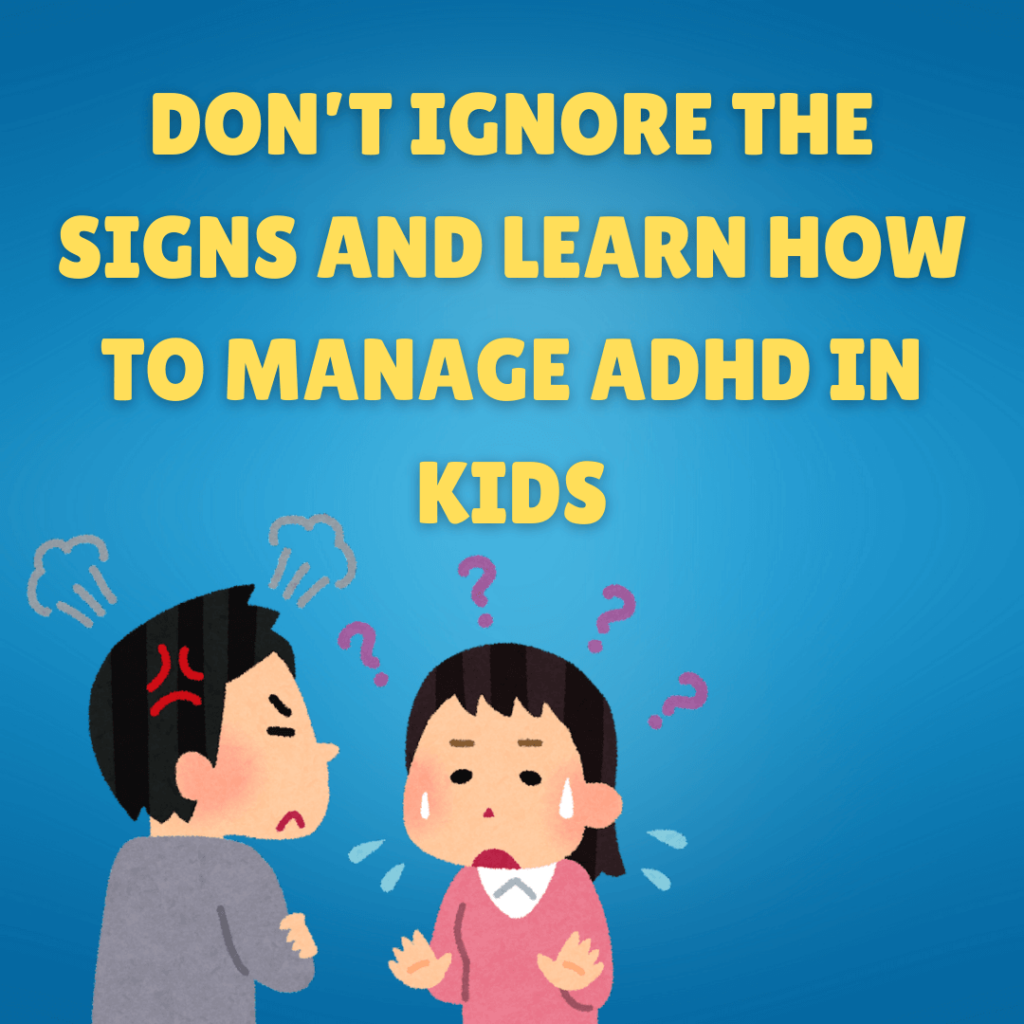Risk factors for ADHD in kids

- Genetics: ADHD is thought to be a heritable condition, meaning that it can be passed down from parents to children. If a parent has ADHD, their child is more likely to have it as well.
- Environment: There are also environmental factors that may increase the risk of ADHD. These include exposure to lead, prenatal exposure to alcohol or tobacco, and premature birth.
- Brain injury: Children who have suffered a brain injury are also more likely to have ADHD.
Signs of ADHD
- Inattention: Children with ADHD may have difficulty paying attention, following directions, and staying organized. They may also seem to be daydreaming or not listening when spoken to.
- Hyperactivity: Children with ADHD may be fidgety, restless, and have trouble sitting still. They may also talk excessively and have difficulty taking turns.
- Impulsivity: Children with ADHD may act without thinking, interrupt others, and have difficulty waiting their turn. They may also have trouble following rules and may be more likely to have accidents.
It is important to note that not all children with ADHD will have all of these symptoms. Some children may have only a few of the symptoms, while others may have many. The severity of the symptoms can also vary from child to child.
If you are concerned that your child may have ADHD, it is important to talk to your doctor. They can help you to determine if your child has ADHD and recommend treatment options.
Treatment for ADHD may include medication, therapy, or a combination of both. Medication can help to improve attention and focus, while therapy can help children to learn how to manage their symptoms.
With proper treatment, children with ADHD can live happy and successful lives.